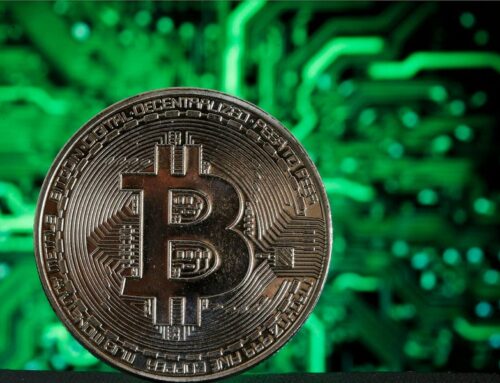China’s green certificate growth shows clean energy progress
October 11, 2024
At its third-quarter press conference on 31 July, China’s National Energy Administration (NEA) released a series of statistics on the power sector’s 2024 performance so far. One standout figure was the 486 million Green Electricity Certificates (GECs) issued during the first half of the year – a 13-fold increase compared to the same period last year.
This signals progress towards the decarbonisation and reform of the power sector, but such a steep increase in issuances also presents administrative challenges: policymakers must now ensure each GEC is rigorously verified and genuinely reflects clean energy going into the grid.
Each GEC represents 1,000 kWh of renewable energy. Since the trading scheme began in 2017, 707 million of these electronic certificates have been issued. During the first half of 2024, more GECs were created than in the previous 6.5 years combined.
The scheme enables renewable energy generators to supplement their revenue by selling GECs, and consumers to meet their compliance or voluntary decarbonisation goals. In China, GECs are the only way to prove that electricity is from a renewable source. As the country moves to increase its consumption of renewable energy, GECs are becoming a powerful accounting tool for the market.
Price finding in the GEC market
According to Anders Hove, a senior research fellow at the Oxford Institute for Energy Studies, this year’s dramatic increase in GEC issuances stems from an NEA policy activated in August 2023, which expanded the scope of eligible projects. It has enabled distributed renewables, offshore wind, and biomass generation firms to sell GECs. They join large-scale wind and solar providers, which have been included in the scheme since 2017.
In addition to issuances, GEC sales also ballooned over the first half of the year, though not at the same rate. According to China Electricity Council data, 187 million GECs were traded in the first five months of 2024 – a 327% year-on-year increase.
Sharon Feng, managing consultant of China power market research at Wood Mackenzie, attributes this growing demand to the Chinese companies facing international pressure to decarbonise as well as the Chinese government’s push to meet the domestic renewable power consumption target. “International companies require their Chinese operations and supply chains to purchase green power to satisfy corporate net zero targets,” Feng explains.
As green power projects are forced into market trading, solar projects might see very weak economics, and maybe the only thing valuable about their power is that it is green
David Fishman, a senior manager at energy sector consultancy The Lantau Group
Low prices are also contributing to growing GEC sales. Currently, GEC supply is outpacing demand, as seen in the disparity between the 486 million GECs issued and the 187 million traded. This imbalance has led to a drop in prices: in the first half of 2023, they ranged from CNY 30-50 (USD 4.25-7.1), but by July 2024, they had fallen to CNY 1-10.
The August 2023 policy also played a role in lowering prices. Before then, renewable electricity generators selling GECs had to forgo central government subsidies. This resulted in a reluctance among generators receiving subsidies to sell GECs for anything less than the subsidy price. According to Hove, “before August 2023, the price of GECs was unofficially tied to the subsidy price. Adjusting that linkage has allowed the price of GECs to fluctuate and the result has been cheaper certificates”. This has also created a flood of GECs from generators still receiving subsidies, which now have a new source of revenue.
This is part of the market’s price-discovery process, which reflects growing liquidity. For example, during China’s Labour Day holiday in early May, GEC prices dipped below CNY 1 as factories shut down and electricity demand plummeted. Spot electricity prices in some regions became negative due to the midday power surplus.
Negative pricing is a challenge for generators, but also an expected consequence of ongoing market reforms. As China liberalises its power sector, negative pricing will likely become a common feature in spot markets. In 2022, the NEA announced that by 2030, all renewable energy generators must sell their electricity at market rates instead of to utilities at fixed prices. This shift forces generators to find ways to stay profitable even as electricity prices decline with increased renewable supply.
“Generators need to see a path to profit so they have an incentive to build projects,” says David Fishman, a senior manager at energy sector consultancy The Lantau Group. “As green power projects are forced into market trading, solar projects might see very weak economics, and maybe the only thing valuable about their power is that it is green.” In this context, GECs help stabilise renewable energy producers’ revenue streams.
Administrative challenges
While GECs are a key component of a market-driven power sector, the rapid increase in issuances has created administrative challenges. The NEA’s July meeting identified issues such as incorrect or duplicate applications, reflecting the strain on regulatory oversight as the market grows.
The Chinese media group Caixin has reported that international recognition of GECs remains limited, partly due to concerns over double-counting. Since 2012, Chinese companies have been able to offset emissions using China Certified Emission Reduction (CCER) credits, via projects like afforestation or renewable energy generation. This overlap means the same renewable project could receive both CCERs and GECs. As a result, CCERs were suspended in 2017, the same year GEC issuance began, though China relaunched the CCER scheme in January this year.
The risk of double-counting persists, however. Offshore wind projects, for instance, can receive both GECs and CCERs, potentially issuing two credits for the same unit of clean electricity. In September, the Ministry of Ecology and Environment issued a policy document clarifying that offshore wind generators who were issued CCERs were not eligible to receive GECs, and vice versa. While there has been no evidence of double counting for offshore wind projects so far, the concern remains.
“There is still a legacy reputational problem, stemming from those fears of issuing GECs and CCERs to the same projects,” explains Fishman. “The number of companies purposefully double-counting is low, but the bigger problem is that the regulator hasn’t yet issued a clearly worded policy that prevents double-counting.”
Policymakers must balance the need to stimulate the GEC market and promote renewable energy development with the upholding of rigorous verification processes. This is especially important because many of the leading purchasers of GECs are Chinese firms doing business abroad – a scandal affecting GEC legitimacy could harm their sustainability claims.
What’s next for the GEC market?
In addition to protecting their credibility, another GEC policy goal seems to be expanding their role in supporting power grid flexibility. A July notice announced that pumped-storage hydropower (PSH) projects are now eligible to issue and trade GECs. PSH stores excess renewable energy by pumping water to higher elevations, releasing it to generate electricity when needed.
This marks the first time that energy-storage projects have been permitted to issue GECs, breaking with international norms. In China, GECs can only be traded once, meaning independent storage projects that purchase green electricity cannot resell the GECs when they sell stored power.
“This limitation on secondary trading is unlikely to change; there seems to be no understanding of why secondary trading would be beneficial,” says Hove.
However, PSH projects are often integrated with hydroelectric generators, so the same entity usually manages both storage and generation. This means there is no need to transfer GECs when the power is stored, and they can then be sold with the stored electricity.
Unlike the more mature US market for renewable electricity certificates, or Europe’s Guarantees of Origin scheme (GoOs), China’s GEC system is still young. With trading volumes only recently taking off, policymakers are now working to address the challenges of rapid growth. The challenge for policymakers will be striking the balance between verifying GECs with the required rigour, and incentivising the development of renewable energy and fresh GECs in the first place.
Search
RECENT PRESS RELEASES
Related Post




